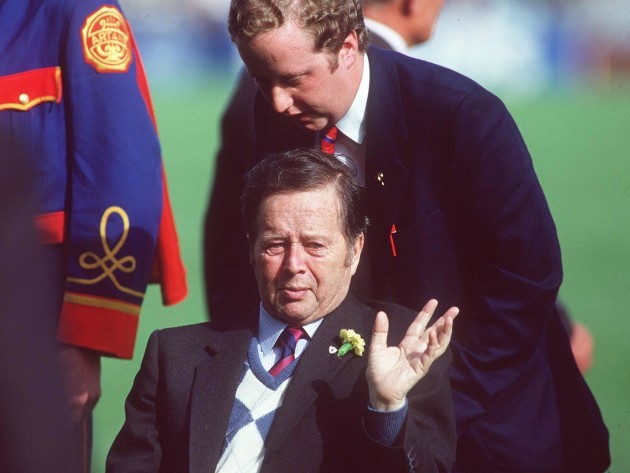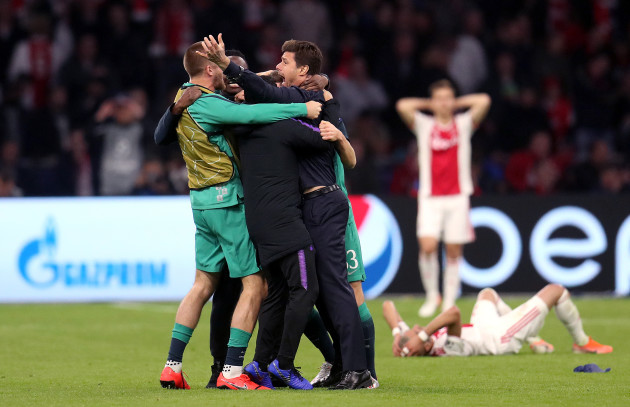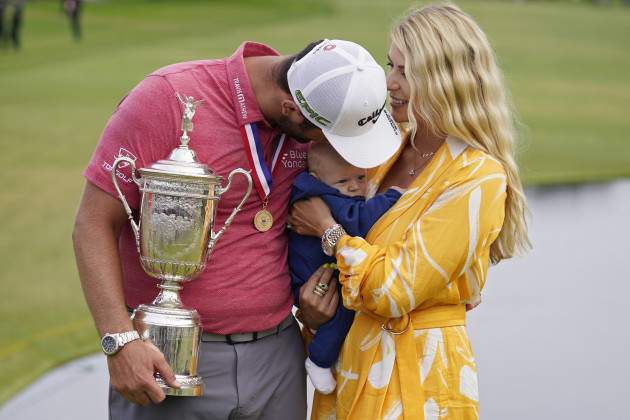1. Peter: It’s hard to believe. And hard to believe there are generations who wouldn’t know his voice at all. But the voice is still in my ears.
Paul: From around the house as kids?
Peter: More so radio or TV. He was always on the go. I wouldn’t have many memories of him spending days at home with nothing to do. You’ve no idea how primitive it was with no mobiles. His routine was contacting the counties to find out when the team was named, where they were staying and eating pre-match. On All-Ireland semi-final or final day, he’d go to a team hotel to put faces to names. With Racing, if you wanted to see a good horse you had to go to the races.
Paul: So he was meticulous?
Peter: Oh yeah. Thursday morning, he’d pull up outside Easons to get the provincial papers. He’d give the nod to someone outside, ‘if the cops come, tell them who it is’. All the boys in Store Street knew his car. It wasn’t a bomb plot, just O’Hehir nipping in to get the papers for the weekend. For the Aintree Grand National, he would buy blank index cards at Christmas. My sister Ann would draw the jockey’s colours on each card and he’d have 70 or 80 in his jacket pocket for months, learning them off.
Twenty-five years on from the iconic broadcaster’s death, Mick Scully sits down with Michael O’Hehir’s youngest son, Peter, and his grandson Paul, both of whom are Scully’s colleagues at The Irish Mirror.
2. And then he’s in for one of his first training sessions. He’s breaking through the middle. Paddy McDaid goes to block his run and… well…
“I mean,” says McIver now in recalled exasperation, “by the time we got Paddy scraped off the ground… I don’t think he played for the county thereafter. Michael walked over, no, trampled all over the top of him.”
Another night they were drilling the players in close-quarters contact. A few volunteers were required to hold tackle bags. Brian’s son Paul had played alongside some fairly big units with Ballinderry such as Niall McCusker and… well…
“On our way home he said, ‘Daddy, don’t you ever do that again. Don’t ever ask me to hold a tackle bag for Michael Murphy again. Every time he hit me, my whole body shook.’”
And that’s been the story of Michael Murphy. There was no bedding-in period. No staring at his hind quarters with idle chat of ‘when he fills out that frame…’
He arrived fully formed and has added and enhanced throughout his career to become part of the very fabric of Donegal; county Championship sponsor, All-Ireland winning captain, shop retailer, greatest ever player, public representative.
In The Irish Examiner, Declan Bogue writes of Michael Murphy: Donegal’s Hot Shot Hamish and Daniel O’Donnell in one.
3. The European Cup ran for 12 seasons before the away-goals law was introduced, in which the away side failed to score in 33% of games. In the 12 seasons after it was introduced, the away side failed to score in 45% of games. Now it is true there are other factors at play. Football became generally more defensive in the late 1960s and ’70s. But there is nothing at all to suggest the away-goals rule checked that tactical development. In fact, might it not be that away teams found it harder to score because home teams were incentivized to defend?
Admittedly, this is football between 1955 and ’79 that we’re discussing, as we have to, given that’s the only data we have for football before the away-goals rule. Football has changed since then. But there is a more recent example: MLS introduced away goals for its playoffs in 2014. There is no evidence it has made any difference.
A study in The Times of London showed that, until 1980, home teams in Uefa competition had an advantage of 1.06 goals per game. By 2000 that had fallen to 0.77. By ’18 it was 0.51. Playing away just isn’t that big of a deal anymore.
The circumstances that led to the introduction of the away-goals rule no longer exist. It’s unfair and arbitrary, privileging some goals over others. And it never actually achieved what it set out to do, anyway—in fact, it was possibly even counterproductive. The question really is not whether Uefa is right to have done away with the regulation, but why it didn’t do so sooner.
Writing in Sports Illustrated, Jonathan Wilson backs Uefa’s decision to scrap the away-goals rule.
4. I jumped up and down and waved my hands until she saw me, about 40 feet away, and started running.
Here came freshly minted Olympian Brooke Forde. My 22-year-old daughter. As someone accustomed to writing about other people’s greatest athletic moments, including covering eight previous Olympics, I was living my own.
Flashback to the 2017 Sacred Heart yearbook when Brooke Forde was voted “Most Likely to be an Olympian” by her classmates! That guess was correct as Brooke will swim for Team USA this year in Tokyo! pic.twitter.com/DIJsk6ltWu
— Sacred Heart Sports (@sha_sports) June 21, 2021
But Brooke never once said out loud the Olympics was her goal, and actually resisted the premise of gearing her career toward that. Her interests and passions extended in many directions beyond the only swimming competition that matters to most people. She wanted to see how good she could be, and she wanted to be an Olympian. But she told her Stanford coaches she did not want to come to the pool every day thinking about making the Olympics.
It was better—safer emotionally—to keep that in the background. The task was too daunting, the chances too slim, to carry that weight daily. She feared disappointing people she knew who had put her on an Olympic pedestal years earlier. So it was compartmentalized for as long as possible, until the calendar demanded she confront it—a demand she almost rejected.
Sports Illustrated columnist Pat Forde writes of his daughter’s tumultuous journey to Olympic qualification.
5. Rahm’s steely demeanor is a far cry from what we saw at his first U.S. Open appearance as a professional four years ago. That tournament was more than a mess for Rahm—he finished 5-over and missed the cut. Here’s what ESPN’s Kevin Van Valkenburg wrote after Rahm’s Friday round: “Over the course of two frustrating days at Erin Hills, I saw Rahm kick his golf bag, chuck his putter, throw a bunker rake, tomahawk-fling a 7-iron up the 17th fairway, and following one particularly bad drive pound his fist into his hands, repeatedly, like a professional wrestler gearing up for Monday Night Raw.”
This isn’t to say that Rahm is lacking for emotion now. It’s more that he’s now finding the proper outlets for it on the course. And as his game has improved, and the reasons for frustration have gotten fewer and farther between, that emotion has changed—from agony back into ecstasy.
Two weeks ago, it seemed like the lasting images of Rahm from this year would be ones of heartbreak: a man with his head hanging in his hands, having just heard the news that would take a tournament from him, as well as time with his family. Now, though, we’ll have not one, but two ecstatic images to replay instead: the birdie putt at no. 17 that tied him with Oosthuizen for the tournament lead, and the one at no. 18, which ultimately gave him the win. Both featured yells, hops, and fist pumps—and both punctuated what a monumental day and year this has been for him.
The Ringer’s Megan Schuster writes of the rapture — and the relief — or Jon Rahm’s US Open victory.



